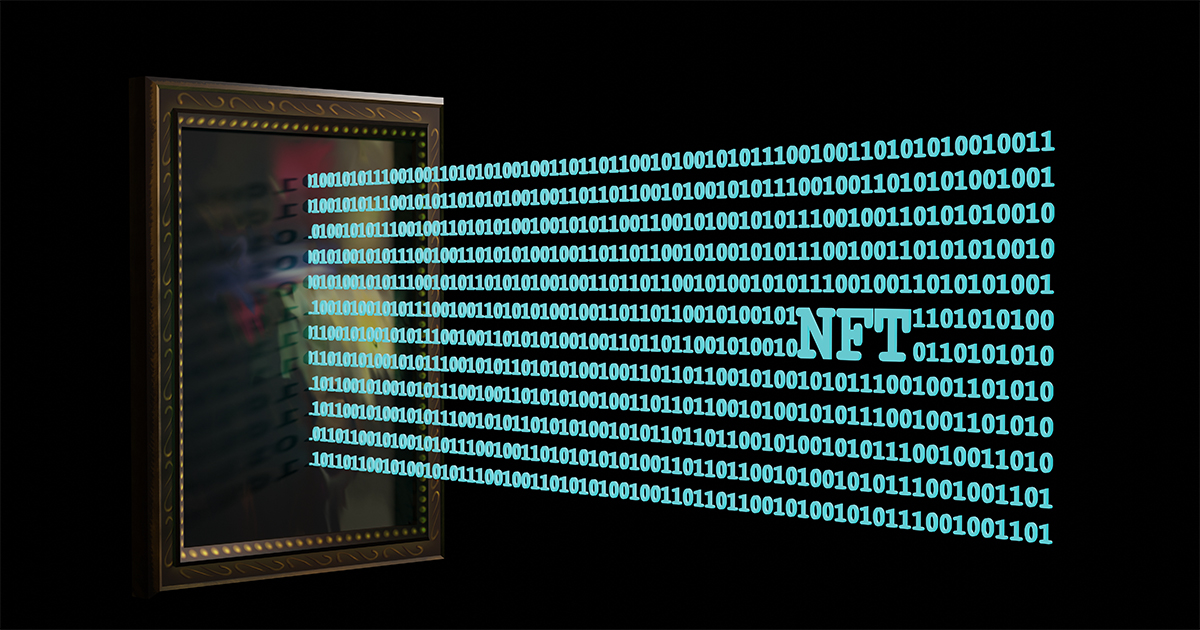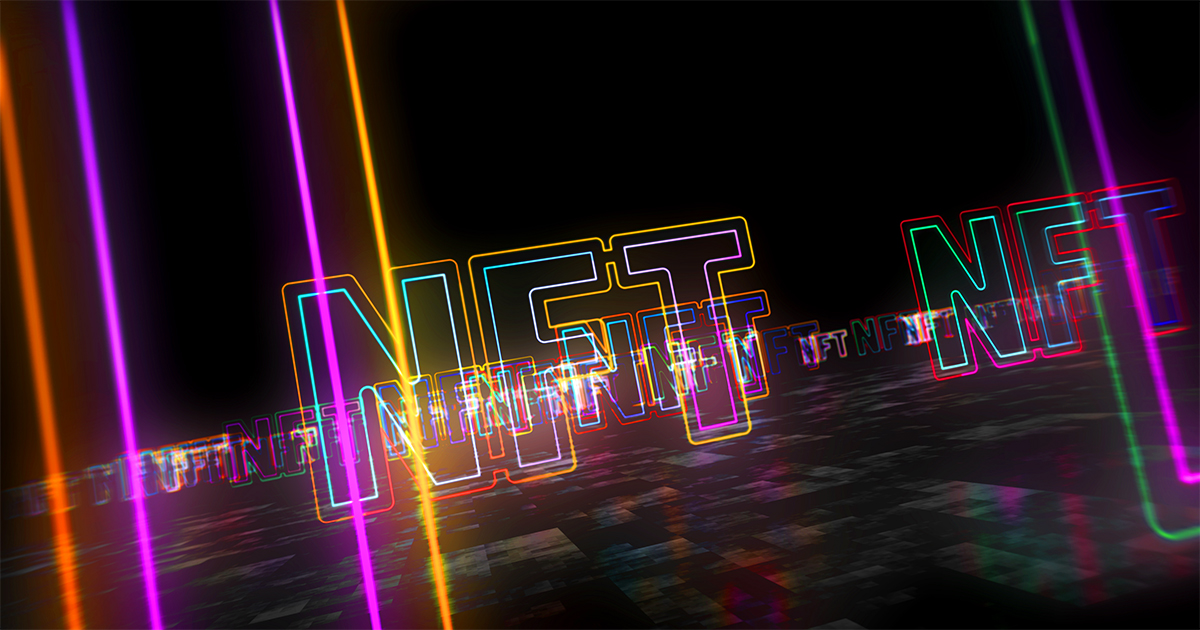
NFTs, or non-fungible tokens, burst into the mainstream a few months ago when Beeple sold his NFT titled: “Everydays: The First 5000 Days” for $69 million at Christie’s. Cryptopunks, a randomly generated set of 10,000 unique digital characters, have sold over $11.8 million worth of NFTs, and the World Wide Web source code sold for $5.63 million. Sales recorded on the largest NFT trading platform, OpenSea, hit $1.9 billion as of August 2021.
What does this mean for creators and buyers? And what are the implications for intellectual property?
Remind Me — What Are NFTs?
Very simply, an NFT is a blockchain-based digital certificate of ownership for any designated digital asset (think of it as similar to the title to a car).
The “non-fungible” part means it cannot be exchanged for something of equal value (unlike cash which is fungible, i.e. I can give you two $5 bills for one $10 bill). It is unique.
Additionally, an NFT can be readily verified as authentic, and this is what makes an NFT a potentially desirable collectable asset: There is clear provenance and indisputable ownership.
With respect to intellectual property, there seems to be a certain mindset that traditional law doesn’t apply to the blockchain, but that is definitely not the case.
Blockchain and Copyright Law
Without getting too deep into copyright law, the basics are that the holder of a copyright has the exclusive right to copy, distribute, modify, publicly perform, and publicly display the work. The copyright holder also has moral rights that protect a creator’s right to attribution and integrity.
One can’t necessarily just alter, destroy, edit, or add to a piece of artwork without permission to do so from the original creator. Unless specifically granted to someone else, copyrights remain with the creator. Copyright law has been around for decades and applies to NFTs.
Just giving attribution to an actual owner of the underlying IP of an NFT doesn’t automatically give the creator of an NFT the right to use it.
Using intellectual property without the owner’s permission is called IP infringement, and an NFT creator can be sued for that. Selling art using copyrighted characters is also an infringement unless you have the permission of the copyright owner.
A good example is DC Comics, which recently sent a letter to all their creators (including freelancers) warning that unlicensed use of their characters and IP in NFTs is prohibited. This came after an artist made $1.85 million by selling NFTs, including characters he used to draw for DC Comics.
The first question we ask clients who are interested in creating NFTs is whether or not they in fact own the IP contained in the digital artwork of the NFT.
Since many NFTs incorporate third party content (logos, art, music, game characters, etc.), using such third-party IP without the owner’s permission can be a big problem for an NFT creator. The first question we ask clients who are interested in creating NFTs is whether or not they in fact own the IP contained in the digital artwork of the NFT.
NFT Buyer Beware
For buyers, it’s important to note that copyright in NFTs is not automatically assigned. A buyer owns the tokens/NFTs that are in their digital wallet, but not necessarily the artwork associated with the NFT.
When purchasing an NFT, it’s very important to pay close attention to the selling platform’s material terms relating to NFTs. These vary from platform to platform, and even from NFT to NFT.
For example, buying an NFT doesn’t automatically give you the right to reproduce it, resell it, or use it for commercial purposes. Buyers should also pay close attention to the digital contract that governs the sale of the NFT, in order to understand exactly what is being purchased at the close of an NFT sale, since the contract determines what rights a buyer has with respect to the digital copy of the creative work associated with the NFT.
Ownership of the virtual art piece is not guaranteed when one buys an NFT.
Most NFT sales merely convey a license to use the digital copy of the creative work, and the copyright holder retains their copyright ownership. This means that ownership of the virtual art piece is not guaranteed when one buys an NFT. The digital governing contract covering the sale of NFTs must expressly provide for an assignment of copyright in a signed writing for the buyer to actually own the copyright in the art.
The buyer definitely owns the tokens that are placed in their digital wallet when they buy the NFT, but this does not automatically confer ownership of the underlying artwork.
Also, watch out for smart contracts embedded into an NFT that can automatically execute actions such as paying a royalty to the NFT creator every time that NFT is resold.
THE ABCs of NFTs:
Are NFTs just more hype, or are they actually the building blocks of the creator economy? Understanding blockchain technology can seem like a lot, but NAB Amplify has the expert knowledge and insights you need to remain at the top of the intersection of art and technology:
- NAB Amplify’s NFT Primer
- What’s the Real Future of the NFT Crypto Art Market?
- Weird Science: The Connection Between NFTs and… Human Nature?
- What Is the Value of an NFT?
- NFTs: Content Strategy or Digital Craze?
When licensing, assigning or transferring intellectual property rights of NFTs, pay special consideration to the license terms. An owner can make a license as broad or as narrow as they want to; so, it’s important to be clear what is and what is not being licensed.
For example, a creator may grant rights to create a limited number of NFTs associated with a copyrighted work, in order to maintain the scarcity and increase value of the NFT based on the work and/or an owner may want to impose restrictions on the right of the licensee to make any modifications associated with the licensed work for purposes of the NFT. This latter situation applies to layered art, programmable art and generative art (techniques popular with NFT creators) which can cause an owner’s IP to be used with other IP or to be modified in ways that he/she may not desire.
Again, it is important to pay attention to the license terms associated with the NFT.
Challenges for Creatives and Creators
Some barriers and pitfalls to issuing NFTs for content creators, artists, talent, etc. are that they should ensure they have the requisite rights and permissions to the files they’re minting and selling. Essentially, those interested in selling NFTs need to make sure, as a seller, that they own the content.
Also, due to amount of energy needed to mint NFTs and maintain the blockchain, NFTs have a terrible footprint on our environment. This can be a potential challenge for creators who are interested in making their own NFT, especially those who are cause-oriented and eco-conscious. I believe it’s important for the NFT world to figure out ways to offset the carbon footprint.
NFTs are here to stay, thanks to growing interest in the art, sports and entertainment worlds, and that the market will stabilize eventually.
Some believe this NFTs are the future of art, while others remain skeptical. I think NFTs are here to stay, thanks to growing interest in the art, sports and entertainment worlds, and that the market will stabilize eventually.




Discussion
Responses (25)